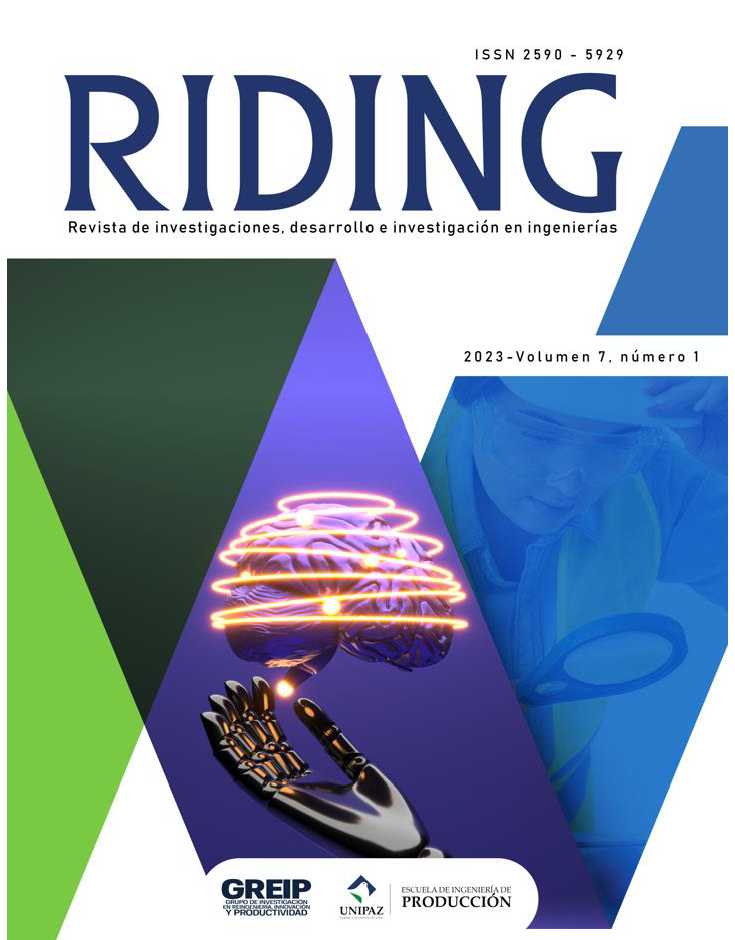Sustainable production from the perspective of sustainable economy, clean production and reverse logistics
Keywords:
Sustainable production, sustainable development, circular economy, clean production and reverse logistics.Abstract
of toxic materials, waste and polluting emissions. This model is aimed at reducing health risks, environmental impacts, reducing the use of resources and increasing business competitiveness.
In this context, sustainable production makes use of tools, such as circular economy and clean production, to minimize possible problems that may arise in different circumstances that affect the environment, economic and social progress; in such a way that they become possible solutions.
The objective is to provide information on sustainable production from the point of view of the circular economy and clean production, through a critical review of the bibliography and results of research data.
This article is of a review of the subject and reflection type with a descriptive qualitative research design, the method used in the research was the bibliographic search, selection criteria: scientific articles from reliable journals and studies and research from recognized entities and organizations, recovery of the information (documentary sources), evaluation of the quality of the articles and other selected documents and the final selection. It can be concluded that sustainable production as a model applicable within any organization leads to environmental, social and economic development benefits
References
Ministerio de ambiente y desarrollo sostenible Argentina, Producción sostenible: [En línea]. Disponible en: https://www.argentina.gob.ar/ambiente/desarrollo- sostenible/produccion- sostenible#:~:text=La%20producci%C3%B3n%20 sostenible%20es%20un,a%20trav%C3%A9s%20d e%20un%20enfoque
Asamblea Nacional de los Estados Unidos. Antecedentes de Desarrollo sostenible [En línea]. Disponible en:
https://www.un.org/es/ga/president/65/issues/sustd ev.shtml
Naciones Unidas. [Página Web]. 17 objetivos para transformar nuestro mundo. Disponible en: https://www.un.org/sustainabledevelopment/es/
Naciones Unidas. [Página Web]. Metas para garantizar modalidades de consumo y producción sostenibles. Disponible en:
https://www.un.org/sustainabledevelopment/es/sust ainable-consumption-production/
ECOEMES.
https://ecoembesdudasreciclaje.es/produccion- sostenible/
Stahel, W. R., “Circular Economy,” Nature, pp. 6– 9, 2016.
Park, J. et al., “Creating integrated business and environmental value within the context of China’s circular economy and ecological modernization,”
J. Clean. Prod., vol. 18, no. 15, pp. 1492–1499,
Oct. 2010.
Yuan, Z. et al., “Where Will China Go? A Viewpoint Based on an Analysis of the Challenges of Resource Supply and Pollution,” Environ. Prog., vol. 27, no. 4, pp. 503– 514, 2008.
McDonough, W. and M. Braungart, Cradle to cradle: remaking the way we make things. New York: North Point Press, 2002., 2002.
Prieto-Sandoval, V. et al., “Circular Economy: An economic and industrial model to achieve the sustainability of society,” in Proceedings of the 22nd Annual International Sustainable Development Research Society Conference. Rethinking Sustainability Models and Practices: Challenges for the New and Old-World Contexts, vol. 2, no. July, R. F. Joanaz de Melo, João; Disterheft, Antje; Caeiro, Sandra; Santos and T. B. Ramos, Eds. Lisbon: ISDRS, 2016, pp. 504–520.
Vanessa Prieto-Sandoval, Carmen Jaca. Economia circular: Relación con la evolución del concepto de sostenibilidad y estrategias para su implementación. [En línea]. Disponible en: https://dadun.unav.edu/bitstream/10171/53653/1/E conomia_Circular.pdf
Henry. F. Fajardo. (2018). La Producción mas limpia como estrategia ambiental en el marco del desarrollo sostenible consejo nacional de la empresa privada. Revista Ingeniería, matemáticas y ciencias de la comunicación. [En línea]. Disponible en:
http://ojs.urepublicana.edu.co/index.php/ingenieria
/article/view/395
Bustos F., Carlos E. La logística inversa como fuente de producción sostenible. [En línea]. Disponible en:
https://www.redalyc.org/pdf/257/25739666002.pdf
Alshamrani, A., Mathur, K. y Ballou, R. (2007). Reverse logistics: simultaneous design of delivery routes and returns strategies. Computers & Operations Research 34, pp. 595–619.
González, J. y González, O. (2001). Logística inversa: un análisis conceptual de nuevos flujos físicos en los canales de distribución. Revista Esic Market
Jayaraman, V., Patterson, R. y Rolland, E. (2003). The design of reverse distribution networks: Models and solution procedures. European Journal of Operational Research 150, pp. 128–149
Kumar, S. y Malegeant, P. (2006). Strategic alliance in a close loop supply Chain, a case of manufacturer and eco-non-profit organization. Tec novation, Volume 26, Issue 10, Pages 1127-1135.
Fernández, E., Avella, L. y Fernández, M. (2006). Estrategia de producción. Segunda edición. Madrid: McGraw Hill.
Beamon, B. y Fernández, C. (2004). Supply-chain network configuration for product recovery. Production Planning & Control, Vol. 15, No. 3, pp. 270–281.
Published
Issue
Section
License

Este obra está bajo una licencia de Creative Commons Reconocimiento-NoComercial-CompartirIgual 3.0 Unported.


